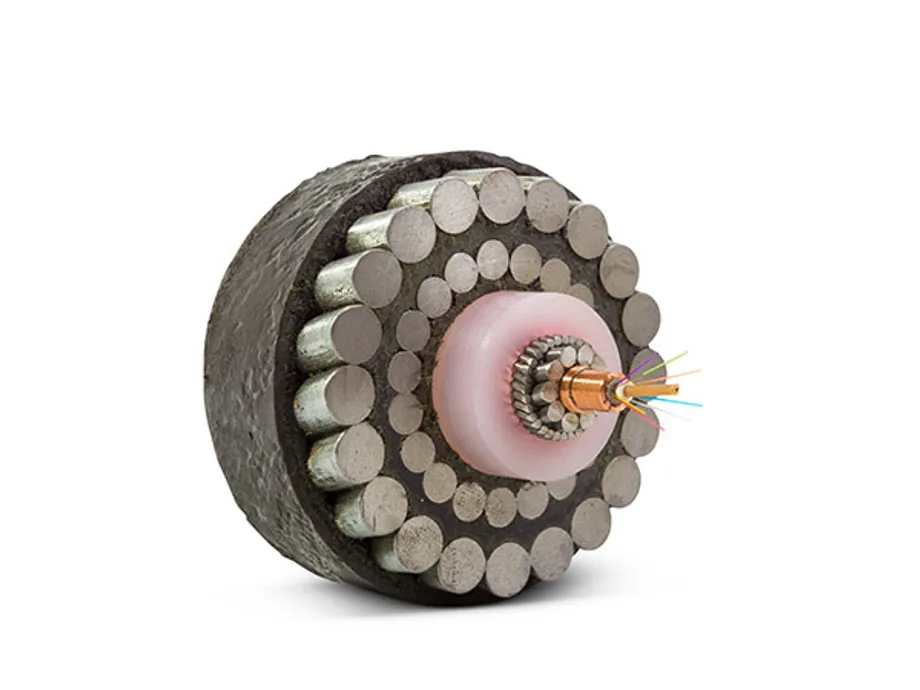Fibre optic communication networks
Fibre-optic communication is a method of transmitting information from one place to another by sending pulses of light through an optical fibre. The light forms an electromagnetic carrier wave that is modulated to carry information.
First developed in the 1970s, fibre-optic communication systems have revolutionized the telecommunications industry. Because of its advantages over electrical transmission, optical fibres have largely replaced copper wire communications in core networks in the developed world.
Optical fibre is used by telecommunications companies to transmit telephone and television signals and for internet communication.
STC fibre optic cable
This is a section of fibre-optic cable, type MM22 made by the company Standard Telephones and Cables (STC) circa 1990s. STC was a British telephone, telegraph, radio, telecommunications and related equipment manufacturer that invented and developed several ground-breaking new technologies related to pulse-code modulation (PCM) and optical fibres.
The company began life in London as International Western Electric in 1883. The company was owned from 1925 to mid-1982 by ITT of the USA. The company was then listed on the London Stock Exchange (at one time a FTSE 100 constituent) before being bought by Northern Telecom (Nortel) in 1991.

